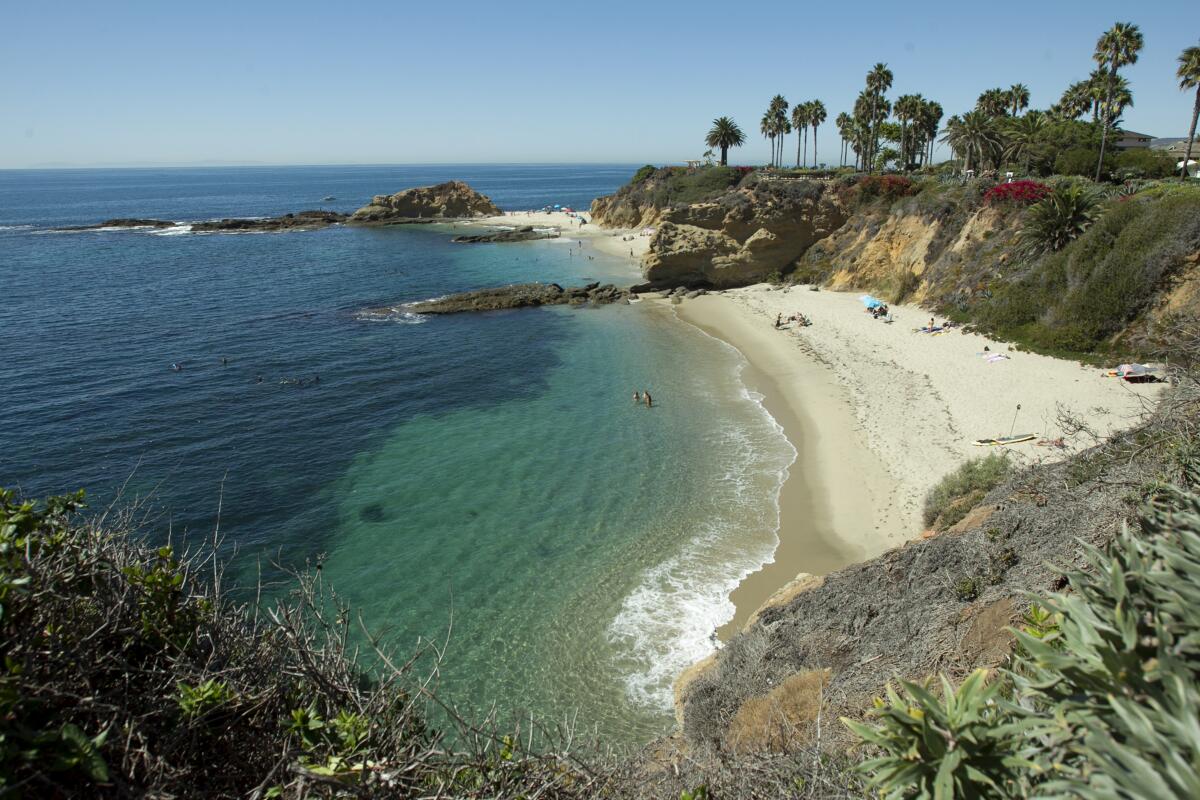No O.C. beaches included on Heal the Bay’s 2022-23 honor roll

A sustained rainy season this year resulted in poorer water quality at local beaches, though officials at Heal the Bay say Orange County is far from the only part of the West Coast impacted by the winter and spring storms.
The Santa Monica-based environmentalist group earlier this month released its 2022-23 “Beach Report Card” report, which looks at roughly 500-plus beaches from Washington state to Tijuana and evaluates water quality on an A to F grade scale. Those grades are based on levels of fecal-indicator bacterial pollution in the ocean, which is not harmful to humans but an indicator of more dangerous bacteria.
And while from past reports it seemed that state and county beaches were on track for high marks this summer, the rainy season forced all but two beaches off of the group’s honor roll.
In previous years at least 15 different Orange County beaches were included on the list, which tracks beaches that score perfect water quality all year, but this year that list only includes Point Loma near the lighthouse in San Diego and Bean Hollow State Beach in San Mateo.
“More rain typically means that increased amounts of pollutants, including bacteria, are flushed through storm drains and rivers into the ocean. Sewage spills pose increased health risks and trigger immediate beach closures, which should be heeded until public officials clear the area,” the group said in a statement. “Last year an astounding 45 million gallons of sewage were spilled and made their way to California beaches.”
Poche Beach, which is on the border of San Clemente and Dana Point, ranked as ninth on the “Beach Bummer” list, which conversely lists the most polluted beaches evaluated, with those at the top considered to have the most significant water quality issues.
Polluted runoff from a storm drain flows directly onto Poche Beach, according to the report, and although the county attempts to mitigate the issue, equipment used to clean runoff from the drain was not running at full capacity last summer. The authors of the report wrote “... it may be time for Orange County to reassess its water quality improvement strategy for this beach since it is no stranger to the Beach Bummer list.”
Not being included on the organization’s honor roll does not necessarily mean that O.C. beaches are in poor shape as the summer season gets underway.
Countywide, 98% of local beaches received A or B grades for last summer. Wet weather grades were also better than average, with 63% of county beaches receiving those same high grades. In the winter dry season, 94% also received A or B grades.
The county saw about 19 inches of rain during the 12-month period covered by the report, 116% higher than the historical average of about 9 inches, according to the organization, but that significant increase did not seem to greatly impact county beaches.
For example, at many of the sites sampled around Newport Bay, water quality was ranked significantly high across all three grades, save at the Newport Slough at the Lancaster/62nd Street Beach, which received an F during the wet season. The same was true in parts of Huntington Harbor and Little Corona Beach, in both the summer and wet seasons. By comparison, Laguna’s beaches seemed to do exceptionally well, along with Corona del Mar State Beach and Crystal Cove.
Five beaches in Newport Beach received Fs in the wet season, including the beach at Orange Street, 52nd/53rd Street, at 38th Street and at 15th/16th Street.
“As climate change continues to bring weather whiplash, our water woes will swing from scarcity to pollution. This year, record precipitation produced major impacts on water quality across Coastal California,” Tracy Quinn, president and chief executive officer of Heal the Bay, said in a statement. “Now more than ever, we must prioritize multi-benefit projects to manage stormwater as both a water quality and supply solution, all while ensuring that the public is kept informed of risks to public health.”
All the latest on Orange County from Orange County.
Get our free TimesOC newsletter.
You may occasionally receive promotional content from the Daily Pilot.




